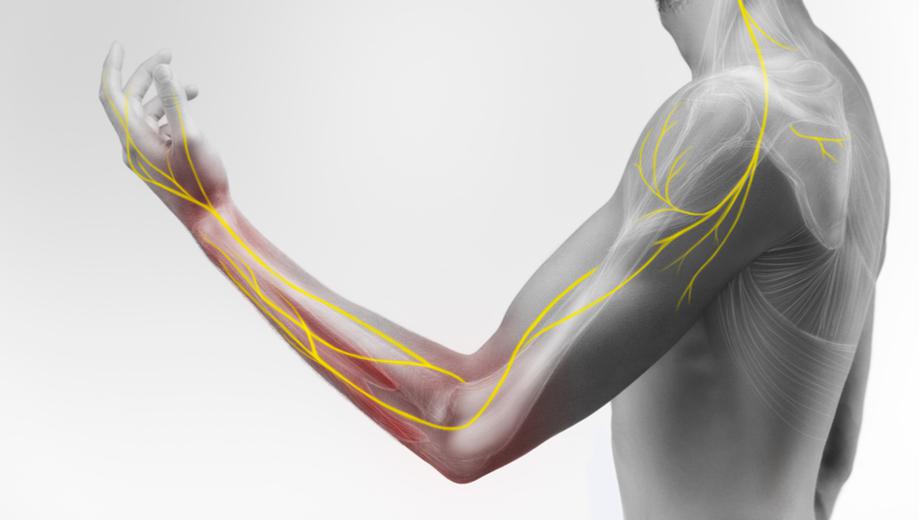- By shoulderadm
- In Blog
Nerve compression syndrome: How to treat it?
Nerve compression syndrome, as the term suggests, is a group of diseases that are caused due to the compression of a nerve. It is also known as nerve entrapment or pinched nerve. This commonly occurs when a nerve is compressed or squeezed by surrounding tissues, such as muscles, bones, cartilage, or tendons. The pressure imparted on the surrounding tissues and organs can cause pain, numbness, tingling, weakness, or other symptoms along the affected nerve’s path.

Where can it happen?
Nerve compression syndrome can occur in various parts of the body, including the neck, back, arms, hands, wrists, legs, and feet. It can happen due to chronic conditions such as muscle inflammation and spasm or sudden jerks, which puts the body in an unfavourable position. Some common examples of nerve compression syndrome include carpal tunnel syndrome, cubital tunnel syndrome, thoracic outlet syndrome, and sciatica.
Treatment planning for nerve compression syndrome
The treatment planning for nerve compression syndrome greatly depends on the duration, from when the symptoms first occured. In the case of chronic nerve compression syndrome, the nearby tissues are negatively impacted. It may create a numbing or tingling effect, which is one of the main reasons why the patient is unable to move the affected area, which increases the problem further. Moreover, the location and the severity of the nerve impact also play a major role in determining the treatment plan. Some of the major treatment modalities include:
- Rest and immobilization: In mild cases, simply taking proper rest and reduce activities that can aggravate the symptoms can be helpful. One of the common treatment modalities is RICE, which stands for rest, ice, compression, and elevation. Immobilization or restricting movement with the help of a splint or brace may also be recommended to reduce movement. This helps reduce the inflammation around the nerve and heal faster.
- Physical therapy: Physical therapy is often prescribed to help strengthen the muscles surrounding the affected nerve, improve the range of motion, and reduce inflammation. Even though patients can easily engage in physical therapy at home, it is not advisable. If the patient is not able to get the correct postures, it may aggravate the condition even more. It is advisable to reach out to a trained physical therapist for help. Exercises and stretches may be tailored to suit the affected nerve.
- Pain medication: Pain relievers, that is, analgesics like ibuprofen and acetaminophen, can help manage mild to moderate pain. In more severe cases, prescription pain medication may be necessary. Most doctors may even advise non-steroidal anti-inflammatory drugs to reduce the inflammation and spasm in the surrounding areas.
- Injection therapy: Corticosteroid injections can be used to reduce inflammation and swelling around the compressed nerve, providing relief from pain and other symptoms.
- Surgery: In cases where conservative treatment options have not provided relief, or the compression is severe, surgery may be necessary. The goal of surgery is to relieve the pressure on the nerve by removing the surrounding tissue or repairing a damaged nerve.
Get in touch with a doctor at the earliest, if you are having the symptoms of nerve compression syndrome.
For enquiries and online appointments, send a message to
www.BangaloreShoulderInstitute.com/contact
For informative videos related to Shoulder problems and their treatment options, Sports
Injuries and other orthopedic conditions, visit the YouTube channel Bangalore Shoulder
Institute – https://www.youtube.com/@BangaloreShoulderInstitute






